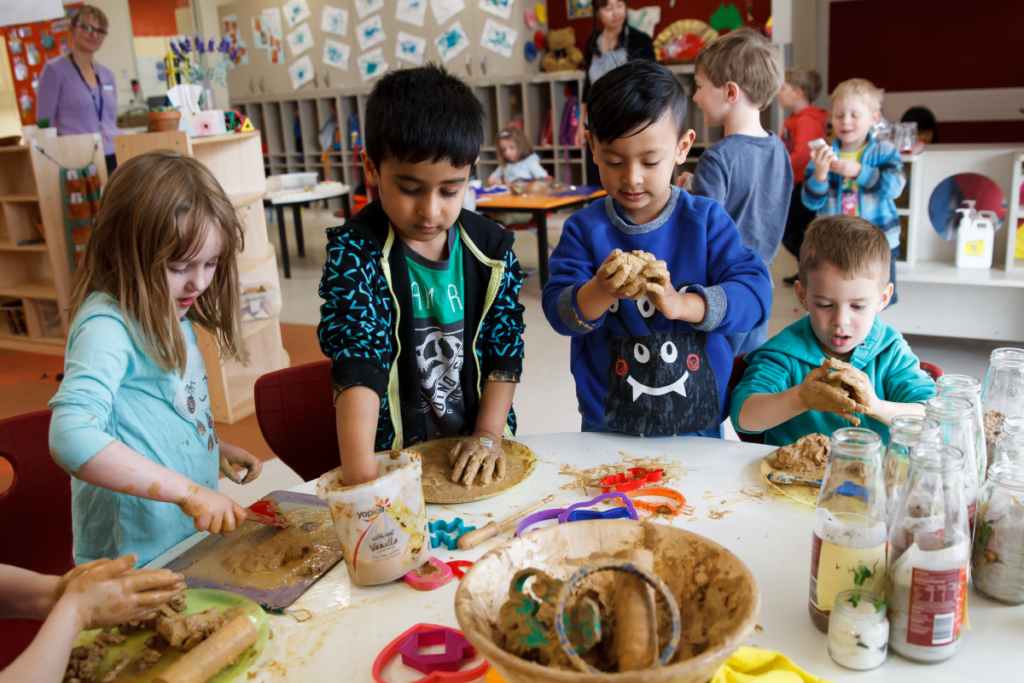Raising Reggio: Three Ways to Bring the Reggio Emilia Approach to Learning Home
“EACH CHILD IS UNIQUE AND THE PROTAGONIST OF HIS OR HER OWN GROWTH. CHILDREN DESIRE TO ACQUIRE KNOWLEDGE, HAVE MUCH CAPACITY FOR CURIOSITY AND AMAZEMENT, AND YEARN TO CREATE RELATIONSHIPS WITH OTHERS AND COMMUNICATE.” – LORIS MALAGUZZI, FOUNDER OF REGGIO EMILIA PHILOSOPHY
Learning Around the Clock
The Reggio Emilia approach is a student-centered educational philosophy that uses self-directed, experiential learning in relationship-driven environments. The Reggio Emilia approach is based on the principles of respect, responsibility, and community through exploration and discovery through a self-guided curriculum.
The unique learning style that is Reggio Emilia shouldn’t exist solely in a classroom setting. The Reggio Emilia approach is a lifestyle of learning – proving that learning doesn’t have to end when the school day ends. In an effort to keep your child excited about learning outside of the classroom, you must create that same energy and excitement at home. Here are three simple ways to bring the Reggio Emilia approach to learning home.

Exploration
The Reggio Emilia approach refers to a child’s learning environment as the “third teacher,” with parents and teachers preceding. Provide a unique hands-on learning environment at home. Give your child the opportunity to explore with both natural and man-made materials. Let them explore nature and provide them with open-ended materials – allowing them the freedom and creativity of finding many different uses. Instead of giving them an outcome, let them test things on their own. Join in on the exploration and ask them what they think might happen. Encourage exploration through problem-solving. Give them the materials to build and sit back and watch the magic happen!
Communication
Communication is key to the Reggio Emilia approach. Listen to your child and discover his/her interests. Have meaningful conversations with your child. Ask questions that require them to answer in sentences – allowing them to express themselves. Give them the chance to feel heard – making them feel like a valued member of the family. Talk to them and discover their passions. From there, provide opportunities for them to play based on interests. Remember, toys do not have to be store-bought. Supplies around the house work just as well, if not better! The opportunities are endless – think outside the box!

Responsibility
The Reggio Emilia approach empowers children to guide their own learning. Give your child assigned tasks at home. Allow them to feel a part of something greater than themselves. Empower them with the ability to do tasks, such as setting the table, picking up after themselves, or helping take care of a family pet. Take them out of the home and into the community to learn the importance of serving others. Children learn through doing. And in doing, the outcome may not always be as expected. Giving children the opportunity to make mistakes is one of the best things you can do for them. This is how they learn!
A Well Rounded Child
The Reggio Emilia approach provides a wonderful foundation for children. Adopting this approach in your home allows for a supportive collaboration between families and teachers and provides students with an encouraging support system. The play-based, child-led learning approach is sure to produce a well-rounded child.


